Guidelines
Coffin Grant Recipients
Jackson Prize Recipients
Place Maker Award Recipients
Place Keeper Award Recipients
Lifetime Achievement Award Recipients
The John Brinckerhoff Jackson Book Prize for 2018
The Foundation for Landscape Studies is pleased to announce the awardees of the 2018 John Brinckerhoff Jackson Book Prize for recently published books that have made significant contributions to the study and understanding of garden history and landscape studies. The recipients are listed in alphabetical order.
Dean Cardasis
James Rose
University of Georgia Press, March 2017
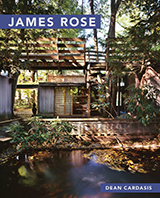 James Rose, the first biography of this important landscape architect, explores the work of one of the most radical figures in the history of mid-century modernist American landscape design. An artist who furthered his profession with both words and built works, Rose fearlessly critiqued the developing patterns of land use he witnessed during a period of rapid suburban development. The alternatives he offered in his designs for hundreds of gardens were based on innovative and iconoclastic environmental and philosophic principles, some of which have become mainstream today.
The book includes new scholarship on many important works, including the Dickenson Garden in Pasadena and the Averett House in Columbus, Georgia, as well as unpublished correspondence. In letters to his mother, Rose reveals a tenderness toward nature and faith in spiritual harmony that belies his reputation as an alienated social critic. Throughout his career Rose refined his conservation ethic, seeing recycled materials and waste reduction as opportunities to create landscapes for contemplation, self-discovery, and pleasure. At a time when issues of economy and environmentalism are even more pressing, Rose’s writings and projects are both relevant and revelatory.
James Rose, the first biography of this important landscape architect, explores the work of one of the most radical figures in the history of mid-century modernist American landscape design. An artist who furthered his profession with both words and built works, Rose fearlessly critiqued the developing patterns of land use he witnessed during a period of rapid suburban development. The alternatives he offered in his designs for hundreds of gardens were based on innovative and iconoclastic environmental and philosophic principles, some of which have become mainstream today.
The book includes new scholarship on many important works, including the Dickenson Garden in Pasadena and the Averett House in Columbus, Georgia, as well as unpublished correspondence. In letters to his mother, Rose reveals a tenderness toward nature and faith in spiritual harmony that belies his reputation as an alienated social critic. Throughout his career Rose refined his conservation ethic, seeing recycled materials and waste reduction as opportunities to create landscapes for contemplation, self-discovery, and pleasure. At a time when issues of economy and environmentalism are even more pressing, Rose’s writings and projects are both relevant and revelatory.
Kenneth I. Helphand
Lawrence Halprin
University of Georgia Press, 2017
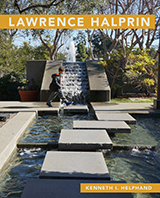 During a career spanning six decades, Lawrence Halprin (1916–2009) became one of the most prolific and outspoken landscape architects of his generation. He took on challenging new project types, developing a multidisciplinary practice while experimenting with adaptive reuse and ecological designs for new shopping malls, the freeway, and urban parks. In his lifelong effort to improve the American landscape, Halprin celebrated the creative process as a form of social activism.
During a career spanning six decades, Lawrence Halprin (1916–2009) became one of the most prolific and outspoken landscape architects of his generation. He took on challenging new project types, developing a multidisciplinary practice while experimenting with adaptive reuse and ecological designs for new shopping malls, the freeway, and urban parks. In his lifelong effort to improve the American landscape, Halprin celebrated the creative process as a form of social activism.
After earning his design degree at Harvard, Halprin moved West and in 1945 joined Thomas Church’s firm. He opened his own San Francisco office in 1949, where he initially focused on residential commissions in the Bay Area. By the 1960s the firm had gained recognition for significant urban renewal projects such as Ghirardelli Square (1962–68), Nicollet Mall in Minneapolis (1962–67), Seattle’s Freeway Park (1970–74), and the Portland, Oregon, Open Space Sequence (1965–78).
A charismatic speaker and passionate artist, Halprin designed landscapes that reflected the democratic and participatory ethic of his era. Throughout his long career, he strived as well to develop poetic and symbolic landscapes that, in his words, could “articulate a culture’s most spiritual values.”
Alison Isenberg
Designing San Francisco: Art, Land, and Urban Renewal in the City by the Bay
Princeton University Press, August 2017
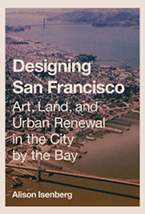 Previous accounts of mid-century urban renewal have focused on the opposing terms set down by Robert Moses and Jane Jacobs – put simply, development versus preservation—and have followed New York City models. Designing San Francisco is the untold story of the formative postwar decades when U.S. cities took their modern shape amid other clashing visions of the future. In this richly illustrated book, Alison Isenberg shifts the focus from architects and city planners – those most often hailed in histories of urban development and desig – to the unsung artists, activists, and others who played pivotal roles in rebuilding San Francisco between the 1940s and the 1970s.
Previous accounts of mid-century urban renewal have focused on the opposing terms set down by Robert Moses and Jane Jacobs – put simply, development versus preservation—and have followed New York City models. Designing San Francisco is the untold story of the formative postwar decades when U.S. cities took their modern shape amid other clashing visions of the future. In this richly illustrated book, Alison Isenberg shifts the focus from architects and city planners – those most often hailed in histories of urban development and desig – to the unsung artists, activists, and others who played pivotal roles in rebuilding San Francisco between the 1940s and the 1970s.
Designing San Francisco offers an insightful discussion of how, when large-scale redevelopment came to low-rise San Francisco in the 1950s, the resulting rivalries and conflicts sparked the proliferation of numerous allied arts fields and their professionals These included architectural model makers, real estate publicists, graphic designers, photographers, property managers, builders, sculptors, public-interest lawyers, alternative press writers, and preservationists. Isenberg explores how these professionals brought new concepts to city, regional, and national planning as they shaped novel projects across urban, suburban, and rural borders. In addition , she discusses how San Francisco’s rebuilding program galvanized far-reaching critiques of the inequitable competition for scarce urban land and propelled debates over responsible public land stewardship. She further challenges many truisms of this renewal era – especially the presumed male domination of postwar urban design, showing how women collaborated in city building long before feminism’s impact in the 1970s.
Alison Isenberg is professor of history at Princeton University, where she codirects the Princeton-Mellon Initiative in Architecture, Urbanism, and the Humanities. She is the author of Downtown America: A History of the Place and the People Who Made It.
Robin Karson, Jane Roy Brown, Sarah Allaback (eds.)
Warren H. Manning: Landscape Architect and Environmental Planner
University of Georgia Press, April 2017
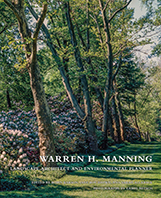 Warren H. Manning’s (1860–1938) national practice comprised more than sixteen hundred landscape design and planning projects throughout North America, from small home grounds to estates, cemeteries, college campuses, parks and park systems, and new industrial towns. Manning approached his design and planning projects from an environmental perspective, conceptualizing projects as components of larger regional (in some cases, national) systems, a method that contrasted sharply with those of his stylistically oriented colleagues. In this regard, as in many others, Manning had been influenced by his years with the Olmsted firm, where the foundations of his resource-based approach to design were forged. Manning’s overlay map methods, later adopted by the renowned landscape architect Ian McHarg, provided the basis for computer mapping software in widespread use today.
Warren H. Manning’s (1860–1938) national practice comprised more than sixteen hundred landscape design and planning projects throughout North America, from small home grounds to estates, cemeteries, college campuses, parks and park systems, and new industrial towns. Manning approached his design and planning projects from an environmental perspective, conceptualizing projects as components of larger regional (in some cases, national) systems, a method that contrasted sharply with those of his stylistically oriented colleagues. In this regard, as in many others, Manning had been influenced by his years with the Olmsted firm, where the foundations of his resource-based approach to design were forged. Manning’s overlay map methods, later adopted by the renowned landscape architect Ian McHarg, provided the basis for computer mapping software in widespread use today.
One of the eleven founders of the American Society of Landscape Architects, Manning also ran one of the nation’s largest offices, where he trained several influential designers, including Fletcher Steele, A. D. Taylor, Charles Gillette, and Dan Kiley. After Manning’s death, his reputation slipped into obscurity. Contributors to the Warren H. Manning Research Project have worked more than a decade to assess current conditions of his built projects and to compile a richly illustrated compendium of site essays that illuminate the range, scope, and significance of Manning’s notable career with specially commissioned photographs by Carol Betsch.
Brian McCammack
Landscapes of Hope: Nature and the Great Migration in Chicago
Harvard University Press, October 2017
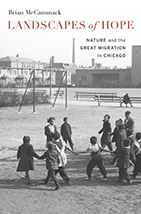 Most historians map the integration of southern and northern black culture through labor, religion, politics, and popular culture. Landscapes of Hope is the first interdisciplinary history to frame the African-American Great Migration as environmental experience. Situated during the period between 1915 and 1940 at the intersection of race and place in American history, this book focuses on Chicago’s parks and beaches as well as youth camps, vacation resorts, and the farms and forests of the rural Midwest. Here we learn how, in spite of persistent racial discrimination and violence in many of these places during the time when hundreds of thousands of African Americans were moving away from the South to begin new lives in the urban North, Chicago’s black community – women and men, young and old, working class and upper class – forged material and imaginative connections to nature as they sought out, fought for, built, and enjoyed an opportunity to realize the promise of nature and public recreation.
Most historians map the integration of southern and northern black culture through labor, religion, politics, and popular culture. Landscapes of Hope is the first interdisciplinary history to frame the African-American Great Migration as environmental experience. Situated during the period between 1915 and 1940 at the intersection of race and place in American history, this book focuses on Chicago’s parks and beaches as well as youth camps, vacation resorts, and the farms and forests of the rural Midwest. Here we learn how, in spite of persistent racial discrimination and violence in many of these places during the time when hundreds of thousands of African Americans were moving away from the South to begin new lives in the urban North, Chicago’s black community – women and men, young and old, working class and upper class – forged material and imaginative connections to nature as they sought out, fought for, built, and enjoyed an opportunity to realize the promise of nature and public recreation.
Micki McElya
The Politics of Mourning: Death and Honor in Arlington National Cemetery
Harvard University Press, August 2016
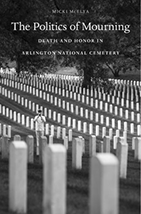 Arlington National Cemetery is considered by many to be America’s most sacred shrine, a destination for four million visitors who each year tour its grounds and honor those buried there. As Micki McElya shows, no site in the United States has played a stronger political role in shaping national identity. With its 400,000 graves sited on a rolling hillside overlooking Washington, D.C on a former plantation built by slave labor, Arlington commemorates sacrifices made in all the nation’s armed conflicts since the Civil War. It is also a place that symbolizes the boundaries of citizenship and the various meanings of honor and love of country.
Arlington National Cemetery is considered by many to be America’s most sacred shrine, a destination for four million visitors who each year tour its grounds and honor those buried there. As Micki McElya shows, no site in the United States has played a stronger political role in shaping national identity. With its 400,000 graves sited on a rolling hillside overlooking Washington, D.C on a former plantation built by slave labor, Arlington commemorates sacrifices made in all the nation’s armed conflicts since the Civil War. It is also a place that symbolizes the boundaries of citizenship and the various meanings of honor and love of country.
The cemetery’s most famous monument was erected in 1921: the Tomb of the Unknown Soldier, which marks the interment of a single World War I unidentified combatant. As a century of wars abroad secured Arlington’s centrality in the American imagination, more “Unknowns” joined the first to be buried at this shrine. In revealing how Arlington encompasses both inspiring and shameful aspects of American history, McElya enriches the story of this landscape, demonstrating that remembering the past must go hand in hand with reckoning with the consequences of history.
Alona Nitzan-Shiftan
Seizing Jerusalem: The Architectures of Unilateral Unification
University of Minnesota Press, 2017
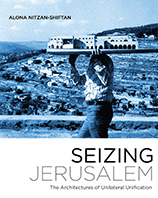 After seizing Jerusalem’s eastern precincts from Jordan at the conclusion of the Six-Day War in 1967, Israel unilaterally unified the city and plunged into an ambitious building program, eager to transform the very meaning of one of the world’s most emotionally charged urban spaces. The goal was as simple as it was controversial: to both Judaize and modernize Jerusalem.
After seizing Jerusalem’s eastern precincts from Jordan at the conclusion of the Six-Day War in 1967, Israel unilaterally unified the city and plunged into an ambitious building program, eager to transform the very meaning of one of the world’s most emotionally charged urban spaces. The goal was as simple as it was controversial: to both Judaize and modernize Jerusalem.
Seizing Jerusalem chronicles how numerous disciplines, including architecture, landscape design, and urban planning, as well as everyone from municipal politicians to state bureaucrats, from Israeli-born architects to international luminaries such as Louis Kahn, Buckminster Fuller, and Bruno Zevi, competed to create Jerusalem’s new image. This decade-long competition happened with the Palestinian residents still living in the city, even as the new image was inspired by the city’s Arab legacy. The politics of space in the Holy City, still contested today, were shaped in this post-1967 decade not only by the legacy of the war and the politics of dispossession, but curiously also by emerging trends in postwar architectural culture.
Drawing on previously unexamined archival documents and in-depth interviews with architects, planners, and politicians, Alona Nitzan-Shiftan analyzes the cultural politics of the Israeli state and, in particular, of Jerusalem’s influential mayor, Teddy Kollek, whose efforts to legitimate Israeli rule over Jerusalem provided architects a unique, real-world laboratory to explore the possibilities and limits of modernist design – as built form as well as political and social action. Seizing Jerusalem reveals architecture as an active agent in the formation of urban and national identity, and demonstrates how contemporary debates about Zionism, and the crisis within the discipline of architecture over postwar modernism, affected Jerusalem’s built environment in ways that continue to resonate today.
Laurie Olin
Be Seated
Applied Research and Design Publishing, an imprint of ORO Editions, 2017
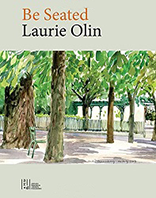 This book consists of a series of essays that begin with the author’s personal discovery of public seating. An ‘ah ha’ moment as a young architect visiting Paris and his early experience as a designer is followed by a brief history of the evolution of public space and seating in the West. This is followed by an account of some of his experiments as a landscape architect, and the theory, craft, and role of seating in a number of prominent civic places his firm and others have designed in the past four decades. Along the way there are reflections on the author’s interest in chairs, seating, public space, and aspects of the profession of landscape architecture.
Accompanying the essays there are sketches, and watercolors made by Olin over time while travelling or working that weren’t originally intended as book illustrations. Some are quick, hasty notes of something observed; others are more careful studies with, on occasion, measurements. Some were made leisurely while enjoying a felicitous moment or place, while others record the author puzzling through a particular design problem. Each in some way exemplifies aspects of the essays helping to articulate or sharpen the author’s insights and point of view – those of a designer, not a historian or critic. They offer an alternative presentation of the topics raised, and a dialogue between writing and image – whether one of contrast, or at times, contrast.
This book consists of a series of essays that begin with the author’s personal discovery of public seating. An ‘ah ha’ moment as a young architect visiting Paris and his early experience as a designer is followed by a brief history of the evolution of public space and seating in the West. This is followed by an account of some of his experiments as a landscape architect, and the theory, craft, and role of seating in a number of prominent civic places his firm and others have designed in the past four decades. Along the way there are reflections on the author’s interest in chairs, seating, public space, and aspects of the profession of landscape architecture.
Accompanying the essays there are sketches, and watercolors made by Olin over time while travelling or working that weren’t originally intended as book illustrations. Some are quick, hasty notes of something observed; others are more careful studies with, on occasion, measurements. Some were made leisurely while enjoying a felicitous moment or place, while others record the author puzzling through a particular design problem. Each in some way exemplifies aspects of the essays helping to articulate or sharpen the author’s insights and point of view – those of a designer, not a historian or critic. They offer an alternative presentation of the topics raised, and a dialogue between writing and image – whether one of contrast, or at times, contrast.
Marc Treib
Landscapes of Modern Architecture: Wright, Mies, Neutra, Aalto, Barragán
Yale University Press, January 2017
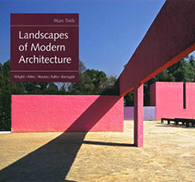 This book provides an authoritative study of the interrelationship between modern architecture, landscape, and site strategy as viewed through the work of five prominent architects – Frank Lloyd Wright (1867–1959), Ludwig Mies van der Rohe (1886–1969), Richard Neutra (1892–1970), Alvar Aalto (1898–1976), and Luis Barragán (1902–1988. Exploring a range of architectural, philosophical, and theoretical approaches, he investigates their site strategies with regard to considerations of climate, topography, and existing vegetation.
This book provides an authoritative study of the interrelationship between modern architecture, landscape, and site strategy as viewed through the work of five prominent architects – Frank Lloyd Wright (1867–1959), Ludwig Mies van der Rohe (1886–1969), Richard Neutra (1892–1970), Alvar Aalto (1898–1976), and Luis Barragán (1902–1988. Exploring a range of architectural, philosophical, and theoretical approaches, he investigates their site strategies with regard to considerations of climate, topography, and existing vegetation.
The character of the sites on which these architects worked dramatically affected their architecture and gardens, a fact illustrated by Wright’s “organic” regard of the desert; Mies’s evolving divorce of building from terrain; Neutra’s transformation of the “realities” of the site; Aalto’s use of the forest metaphor and interior landscapes; and Barragán’s architectonic conversion of the land. Richly illustrated with rarely published archival drawings and plans, accompanied by the author’s own exceptional photographs, this book presents the spectrum of architectural responses to the constraints of site, climate, client, program, building material, region, and nation. Taken as a group, the work of these five architects sheds important light on the consideration and influence of the site and landscape on the practice of architecture during the 20th century.
Marc Treib is professor of architecture emeritus at the University of California, Berkeley.
Diane Waggoner With Russell Lord and Jennifer Raab
East of the Mississippi: Nineteenth-Century American Landscape Photography
Yale University Press, March 2017
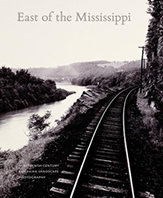 This important reconsideration of landscape photography in 19th-century America explores crucial but neglected geographies, practitioners, and themes. It heightens awareness of the many photographers working in the eastern half of the United States during the same period as their more famous counterparts were capturing striking images of the West. To date, their works, with the exception of Civil War images, have received relatively scant attention. Redressing this imbalance, East of the Mississippi is the first book to focus exclusively on another body of photographs that helped shape the public’s consciousness of an American national identity. Celebrating natural wonders such as Niagara Falls and the White Mountains as well as capturing a cultural landscape fundamentally altered by industrialization, these images also documented the impact of war, promoted tourism, and played a role in an emerging environmentalism.
Showcasing more than 180 photographs from 1839 to 1900 in a rich variety of media and formats – from daguerreotypes, salted paper prints, tintypes, cyanotypes, and albumen prints to stereo cards and photograph albums – this volume exemplifies many of the inventions in the art of photography during period.
This important reconsideration of landscape photography in 19th-century America explores crucial but neglected geographies, practitioners, and themes. It heightens awareness of the many photographers working in the eastern half of the United States during the same period as their more famous counterparts were capturing striking images of the West. To date, their works, with the exception of Civil War images, have received relatively scant attention. Redressing this imbalance, East of the Mississippi is the first book to focus exclusively on another body of photographs that helped shape the public’s consciousness of an American national identity. Celebrating natural wonders such as Niagara Falls and the White Mountains as well as capturing a cultural landscape fundamentally altered by industrialization, these images also documented the impact of war, promoted tourism, and played a role in an emerging environmentalism.
Showcasing more than 180 photographs from 1839 to 1900 in a rich variety of media and formats – from daguerreotypes, salted paper prints, tintypes, cyanotypes, and albumen prints to stereo cards and photograph albums – this volume exemplifies many of the inventions in the art of photography during period.
Diane Waggoner is curator of 19th-century photographs at the National Gallery of Art. Russell Lord is the Freeman Family Curator of Photographs at the New Orleans Museum of Art. Jennifer Raab is assistant professor of the history of art at Yale University.
